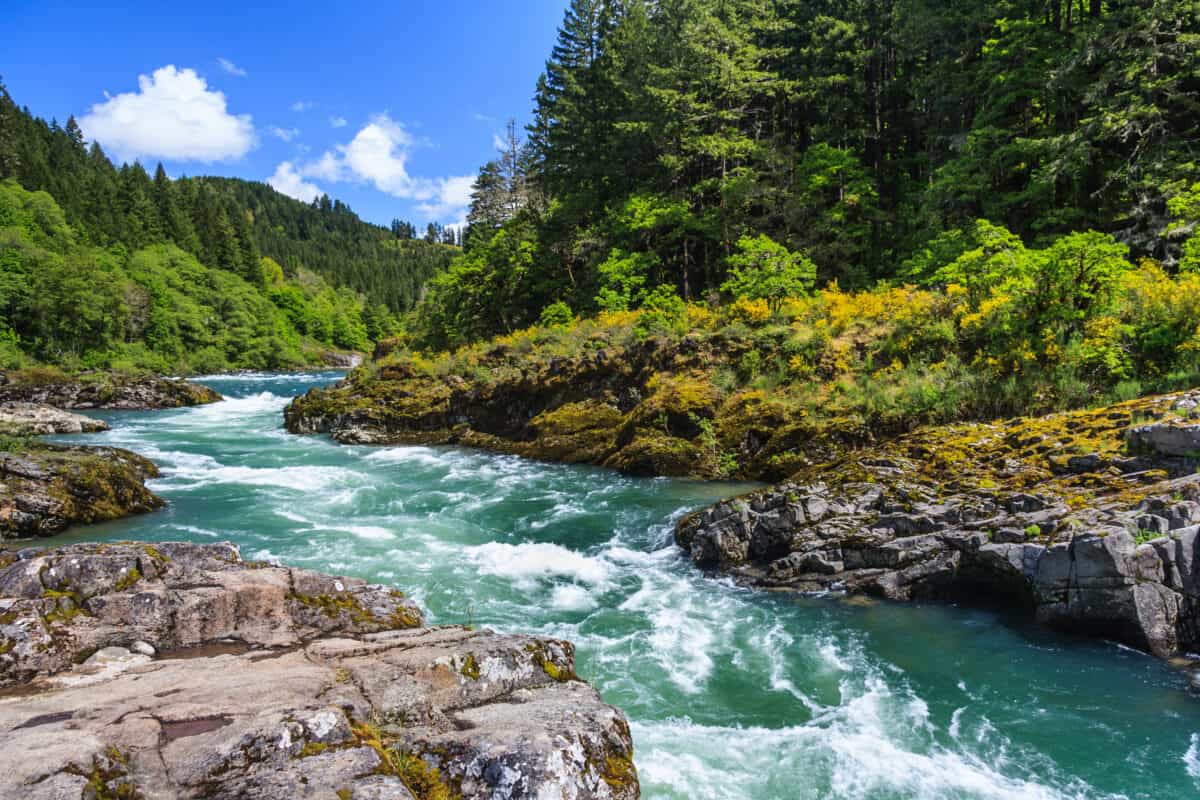Seeking Animals and Wildlife in America? Embarking on a journey through some of the most wildlife-abundant states in the United States promises serendipitous encounters of a lifetime. The unmistakable vastness of biodiversity awaits. Let’s explore the animals of America.
Jump to your favorite headline below:
Key Points
| State | Common Wildlife | Notable Species |
|---|---|---|
| United States | White-tailed deer, raccoons, | Bald eagle, American bison, |
| squirrels, rabbits, skunks, | gray wolf, American alligator, | |
| foxes, various bird species | American dippers, | |
| sandhill cranes, and more | ||
| Alaska | Bears, caribou, moose, wolves, | Brown bear (grizzly), polar bear, |
| arctic foxes, orcas, whales, | black bear, bison, Dall sheep, | |
| salmon, beavers, otters, | wolves, Arctic foxes, orcas, | |
| birds of prey | salmon, beavers, otters, birds of prey | |
| New York | Coyotes, dolphins, seals, | Black bear, mountain lions, |
| raccoons, black bears, | coyotes, raccoons, otters, deer, | |
| moose | moose, birds of prey | |
| Wyoming | Bighorn sheep, bison, | Bighorn sheep, bison, wolves, |
| mountain lions, wolverines, | bears, wild horses, birds of prey | |
| wolves, bears, wild horses, | ||
| birds of prey | ||
| Colorado | Elk, deer, bighorn sheep, | Elk, deer, bighorn sheep, bears, |
| mountain lions, black bears, | mountain lions, wolves, birds of prey | |
| birds of prey | ||
| California | Dolphins, seals, sea turtles, | Dolphins, sea turtles, black bears, |
| black bears, birds of prey | birds of prey | |
| Hawaii | Dolphins, monk seals, bats, | Dolphins, monk seals, deer, wallaby, |
| deer, sea turtles | sea turtles | |
| Florida | Dolphins, manatees, alligators, | Dolphins, manatees, alligators, |
| snakes, turtles, black bears | snakes, turtles, black bears, birds | |
| of prey |
Introduction
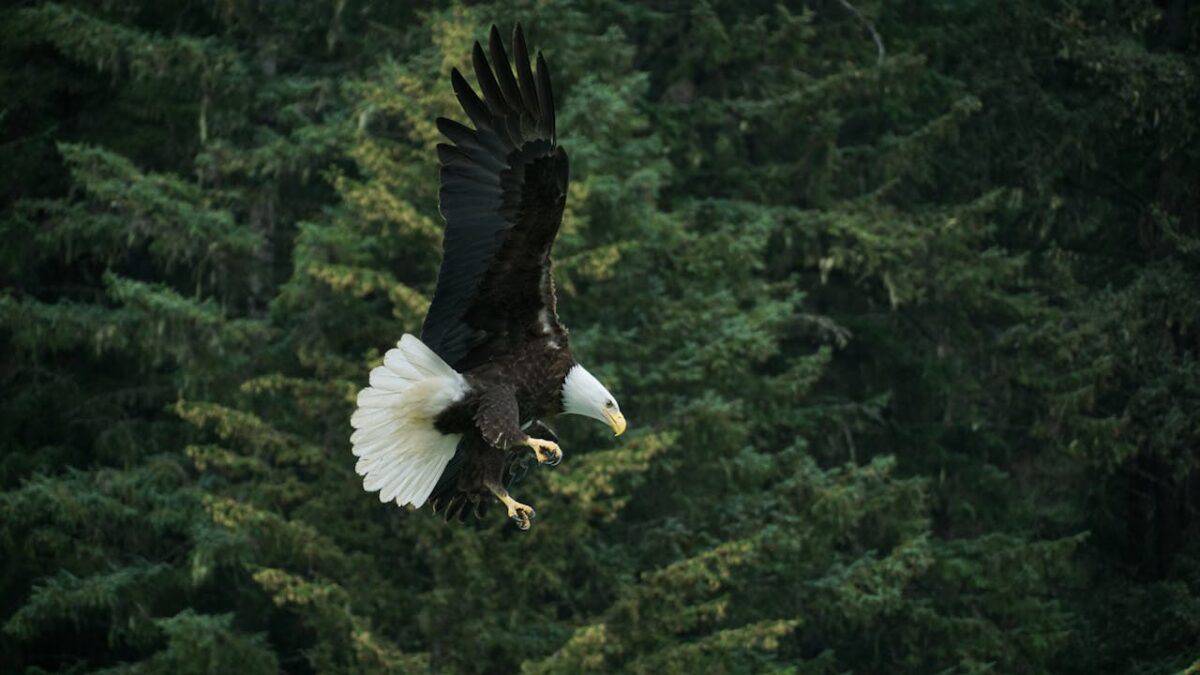
The vast expanse of the United States profoundly influences the rich and varied biodiversity found across its landscapes. The nation encompasses multiple ecoregions, showcasing an immense variety of flora and fauna that cannot be fully detailed here.
Furthermore, a diverse array of recognizable and fascinating species contributes to the essential tapestry of wildlife in America. The spectrum of animals in the United States is extensive.
Remarkably, there are over 800 bird species, encompassing both seasonal and permanent populations. This includes iconic species such as the bald eagle, American dippers, robins, brown pelicans, sandhill cranes, as well as a diverse range of falcons and owls.
The diversity of mammals is equally impressive, with over 400 species. From large carnivores like grizzly bears, mountain lions, and wolves to smaller creatures like beavers, squirrels, armadillos, and bats, along with marine mammals such as blue whales, spinner dolphins, orcas, and porpoises.
Reptiles, amphibians, fish, and invertebrates thrive across various terrains. Rattlesnakes, snapping turtles, alligators, spotted salamanders, tree frogs, bull sharks, flying fish, rainbow trout, and an array of both common and unique insects, including giant Darner dragonflies, fireflies, tarantulas, and sea cucumbers, are just a glimpse of the diverse wildlife found in the United States.
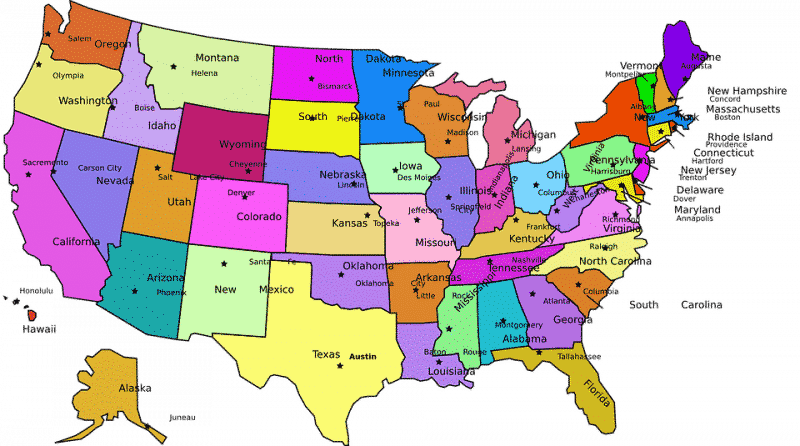
From North to Southern USA, we take you from the arctic tundra to the arid desert land, rolling coasts, swamps, and mountain ranges of North America, the USA’s most extraordinary nature destinations.
Alaska: Where to see wildlife in the US
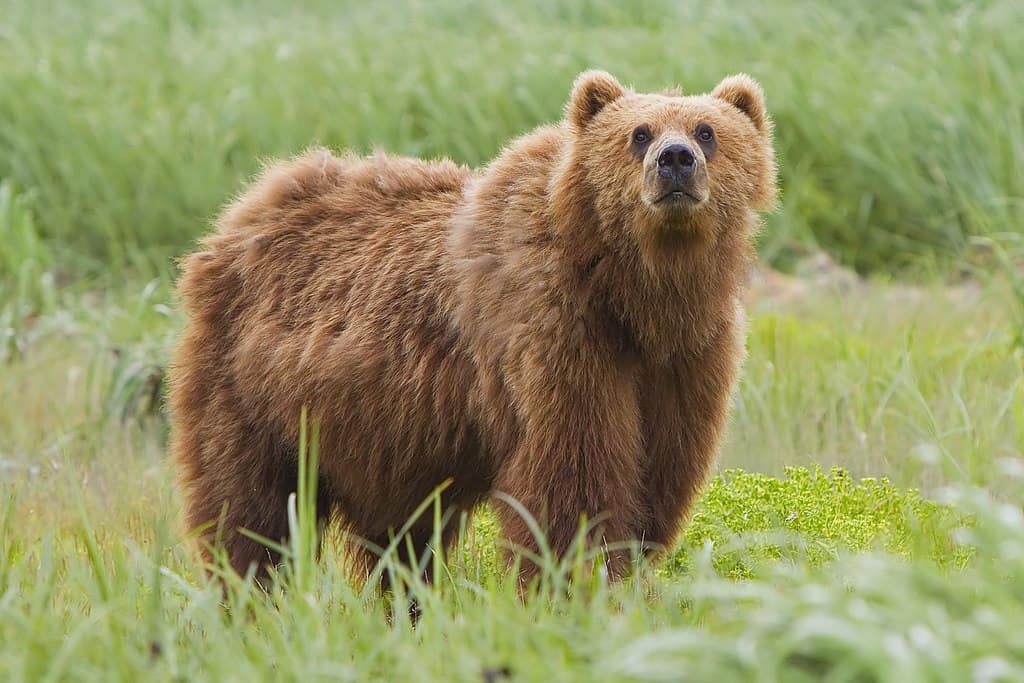
Certainly, numerous travelers opt to venture into Alaska to marvel at its breathtaking landscapes, characterized by pristine nature, majestic mountains, glaciers, fjords, crystal-clear lakes, waterfalls, and National Parks.
Furthermore, Alaska should be at the forefront of your travel list if you have a keen interest in wildlife sightings. Witness bald eagles gathering in the hundreds, moose causing traffic jams, and millions of salmon spawning in its rivers. It is highly advisable to partake in guided tours through national parks or wildlife refuges to observe moose and caribou or embark on boat tours to encounter otters, whales, and porpoises. Regardless of the chosen destination in Alaska, one can expect to encounter a diverse array of expansive wildlife.
Animals you may expect to encounter
Bears
To begin with, Alaska is home to four distinct bear species: the Brown bear (grizzly), Polar bear, Black bear, and Glacier bear. Currently, there are numerous opportunities for bear viewing in Alaska, with Denali National Park standing out as one of the most favored locations to observe bears in their natural habitat.
Caribou, Moose, Mountain Goat, Sheep & Bison
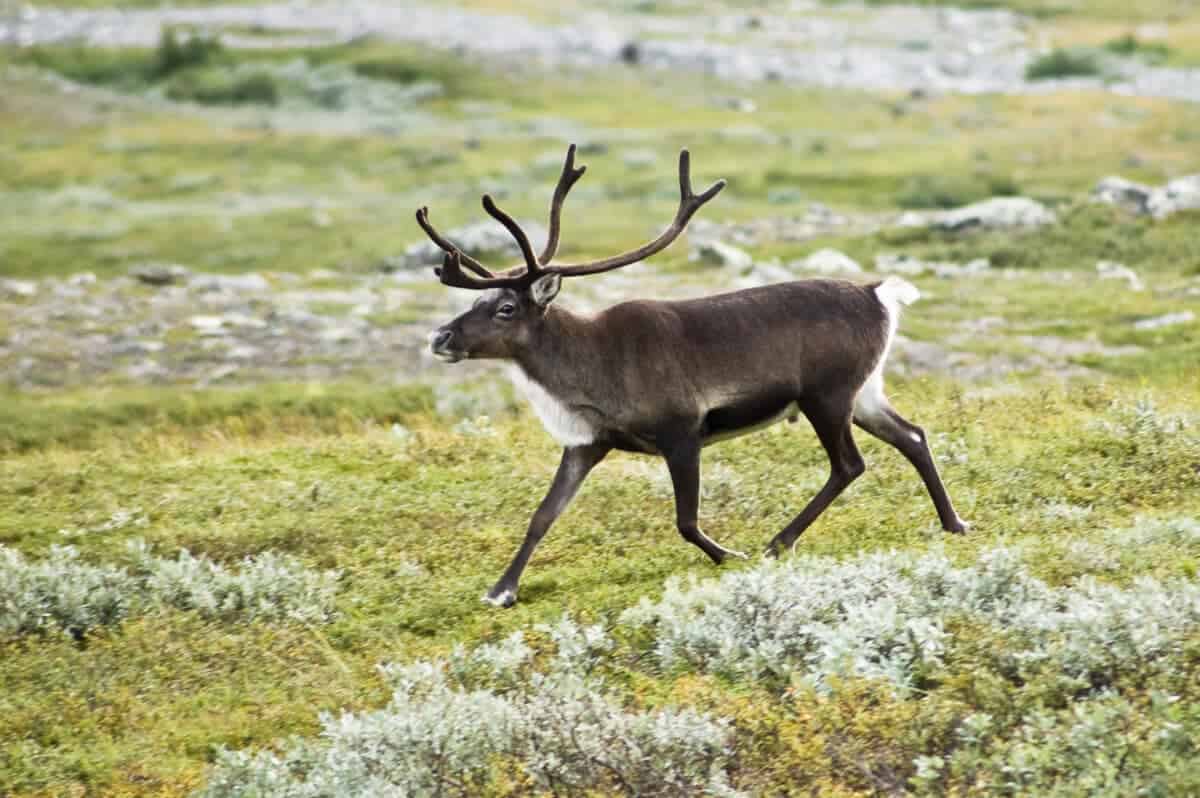
Remarkably, Caribou populations in Alaska are dispersed among 32 herds, totaling approximately 175,000 to 200,000 individuals, while moose are widespread throughout the state. Furthermore, there are an estimated 3,600 to 4,600 mountain goats, mainly inhabiting the Kenai Peninsula. Dall Sheep are found in the mountain ranges of Alaska, and bison are frequently sighted in various North American states, particularly in the Delta River area in Alaska’s Interior.
Wolves & Arctic Fox
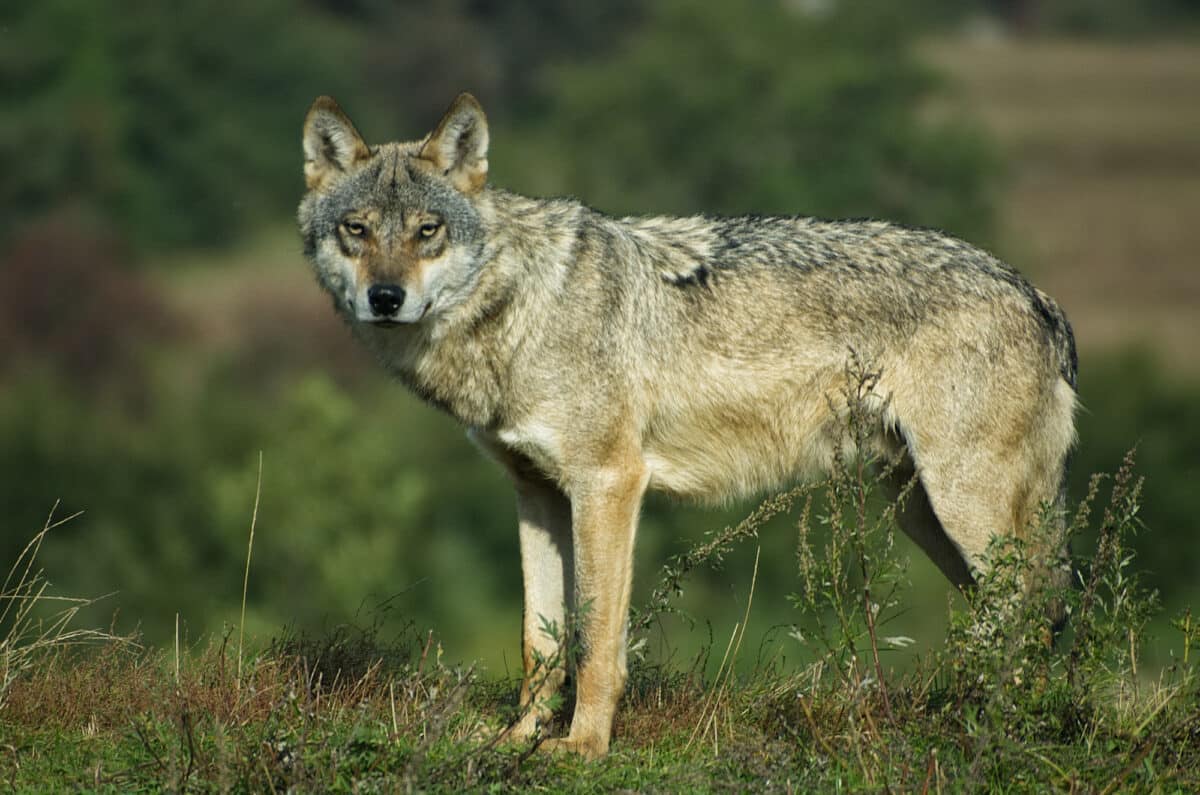
Alaska is home to an estimated 7,000 to 11,000 wolves. The wolf resides throughout mainland Alaska.
Arctic foxes embark on migrations from their fall breeding grounds to coastal areas. Found in treeless coastal regions, the Arctic fox inhabits areas stretching from the Aleutian Islands north to Point Barrow and eastward to the Canada border in Alaska.
Orcas & Whales
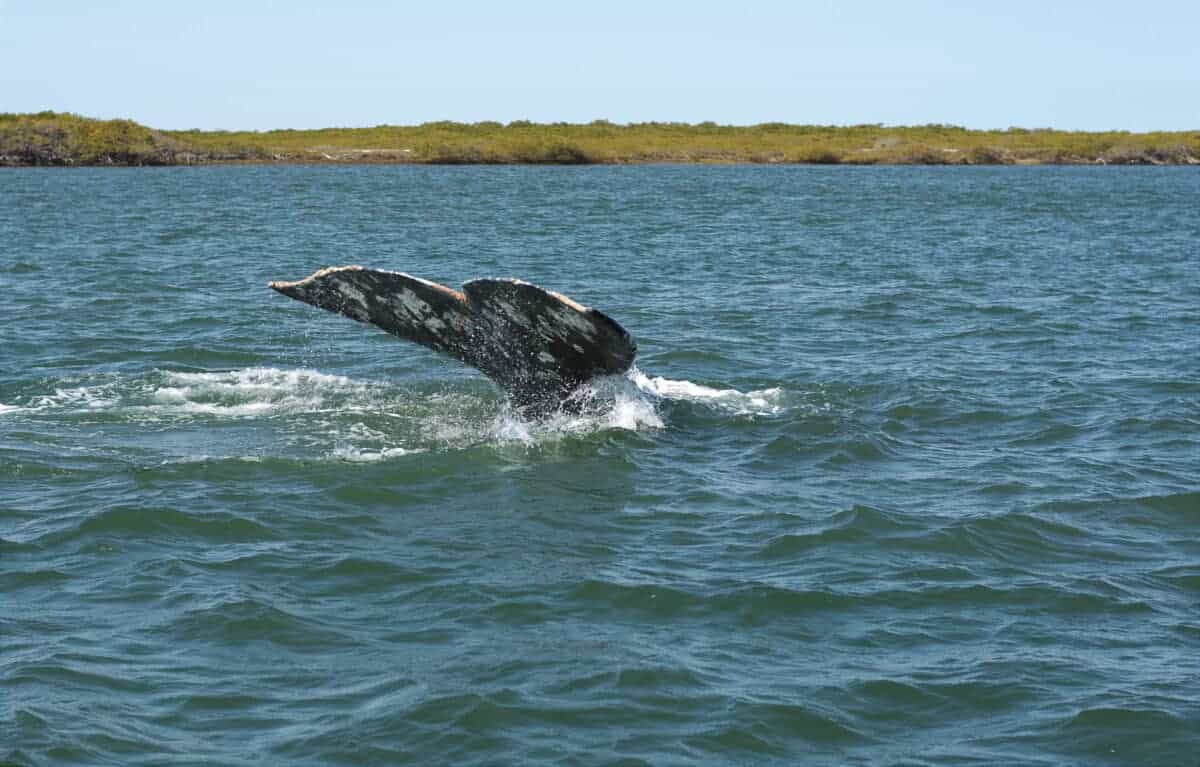
Killer whales can be observed in southeast Alaska from early May to early June, and sightings become more sporadic from June through September. They are known to inhabit Resurrection Bay near Seward and are present throughout Southeast Alaska, with the highest concentration found near Juneau and Ketchikan.
Salmon, beavers, and otters
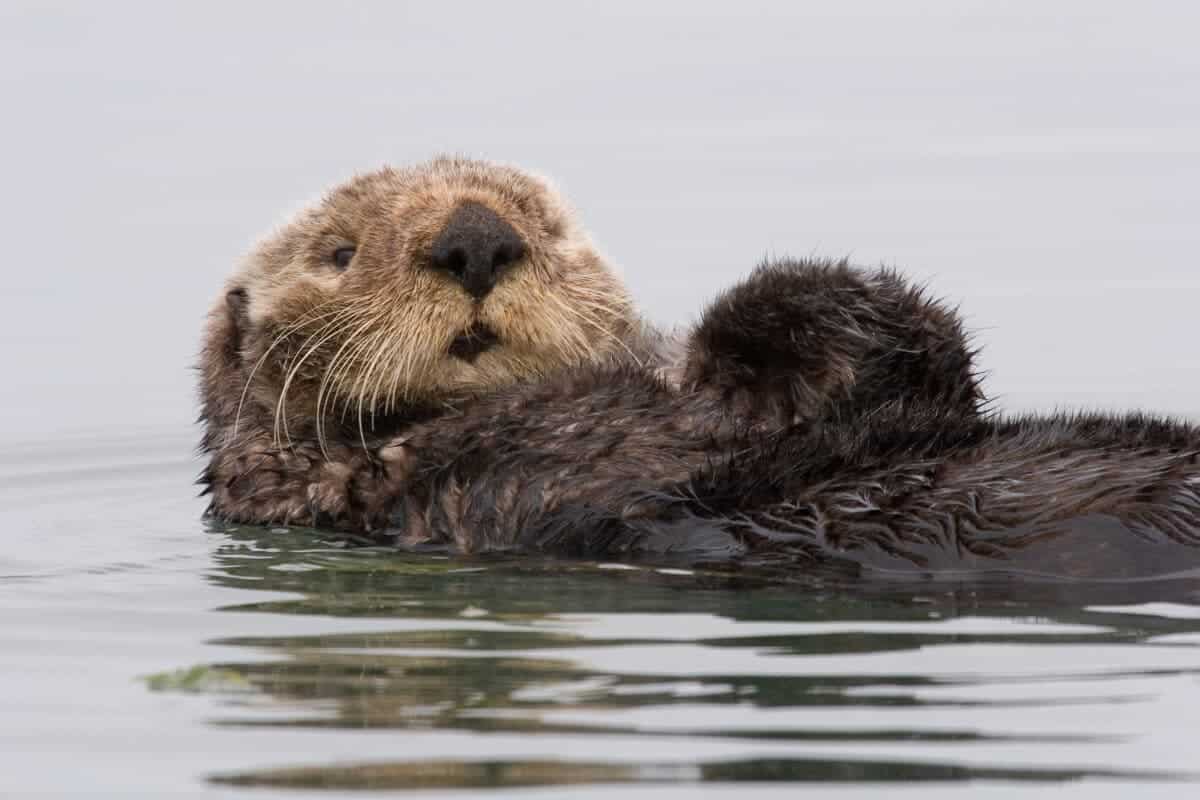
Each summer, substantial salmon runs make their way back to rivers and streams in the Anchorage area. In this region, you have the opportunity to encounter five species of Alaska salmon, and sea otters can be spotted from the Aleutian Islands across the Kenai Peninsula and the Gulf of Alaska.
Birds: Owls, Falcons, eagles, and Puffins
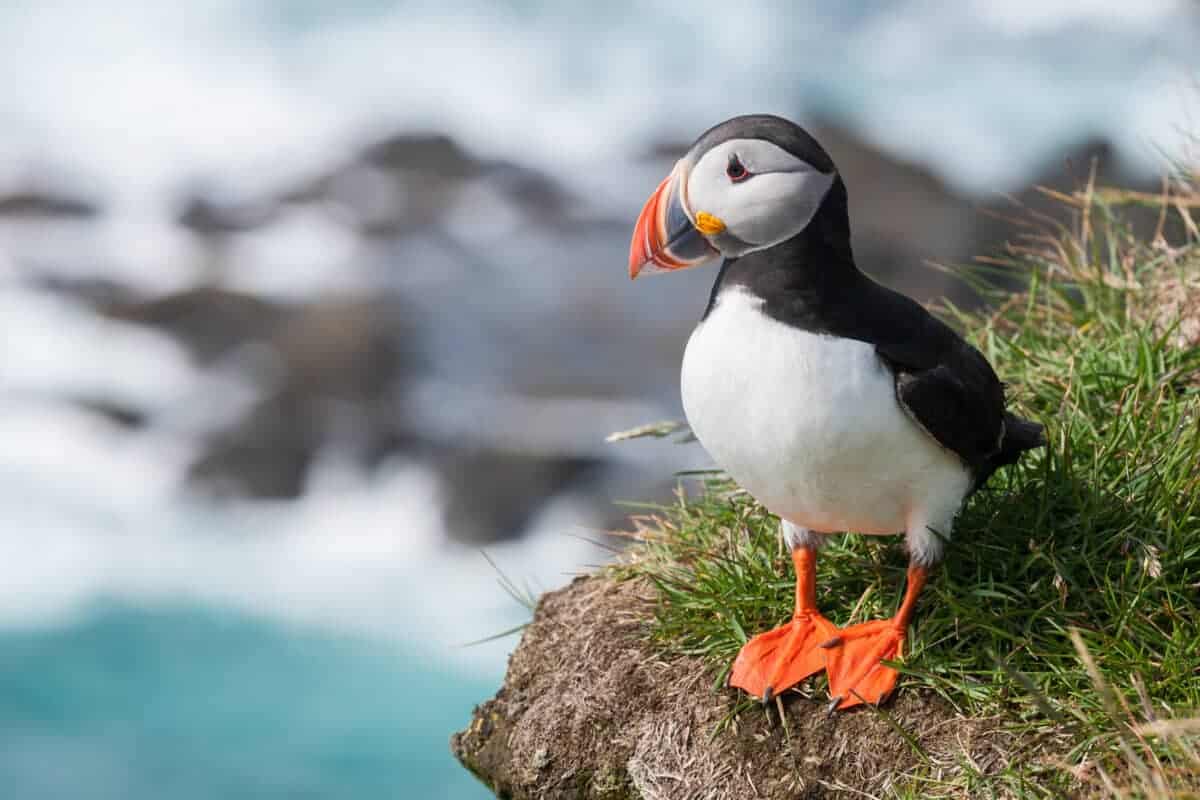
Hundreds of bird species inhabit Alaska, especially in coastal regions. With nearly 500 species of birds documented in Alaska, it is a bird lover’s paradise to visit.
National Parks & operators
The options may seem limitless, with 17 national park units and 16 national wildlife refuges.
Alaska Wildlife Guide for incredible and tailored tours from the arctic circle to the intricacies of Alaskan culture and heritage. They specialize in Summer, Winter, and Northern Lights tours!
Adventure Kodiak bear tours and cruises offer unique access to nature enthusiasts and animal (especially bear) lovers.
Seaward wildlife tours offer encounters with the many marine animals that visit Alaska on migration each year. From whales to Orcas, birds, and beautiful landscapes from the ocean perspective. Small and personalized tours.
Alaska Wildlife Adventures excites foreigners who fall in love with Alaska through mountainous adventures and more!
Alaska wildlife Conservation Center: Visit orphaned and rehabilitated wildlife close up and personal, and by doing so, contribute to the conservation and protection of other animals.
New York: Where to see wildlife in the US
New York and New York City stand out as premier tourist attractions and pivotal centers for global economic and foreign affairs. While commonly perceived as an urban landscape dominated by towering skyscrapers, there’s more to New York than its iconic skyline. Venture further inland, and you’ll discover a surprising abundance of nature, showcasing a deceptive density of wildlife even within the bustling metropolis.
Coyotes have inhabited New York state since at least 1920 and can be found living within New York City. While sightings have occurred over the last three decades, it is reported that only one coyote is known to reside in Central Park. Contrary to the common belief that coyotes thrive solely in rural or wild areas, they readily adapt to living in close proximity to human populations. Coyotes are widespread throughout Upstate New York and are known to inhabit numerous suburban and urban areas. On rare occasions, they may be spotted in parts of New York City and Long Island.
Read our article on New Yorks’s Urban Coyote population.
Dolphins & Seals
Bottlenose dolphins, common dolphins, pilot whales, and Risso’s dolphins reside off the south shore of Long Island. Sightings of bottlenose dolphins are the most common since they live closer to shore in coastal waters like harbors and bays.
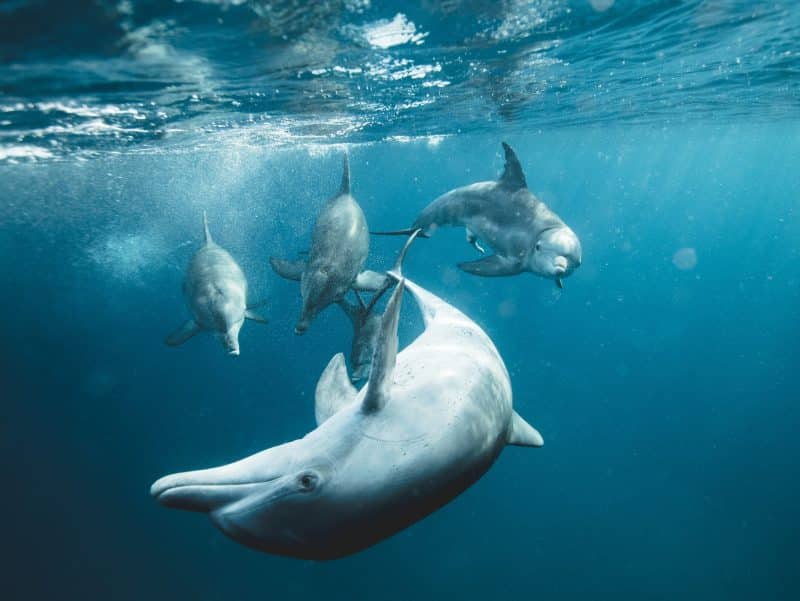
The shores of New York are home to seals! These marine mammals can be spotted from late fall to late spring, with the highest concentration typically around April. Seals often come ashore, seeking sandy beaches or rocks, where they regulate their body temperature, socialize, give birth, and molt. By hauling out in groups, they enhance their safety, avoiding potential predators. While up to five species may be observed in local waters, harbor, gray, and harp seals are the most commonly encountered.
Raccoons
Raccoons thrive in all five boroughs of New York City, showcasing their remarkable adaptability to urban environments where food and shelter are abundant. Contrary to their commonly perceived suburban habitat, the cityscape offers them everything they require.
These resourceful creatures can pose a nuisance if inadvertently provided with food or shelter by humans. Attractions may include food sources in gardens, fish ponds, pet feeders, garbage, or potential shelter in various cavities.
Black Bear
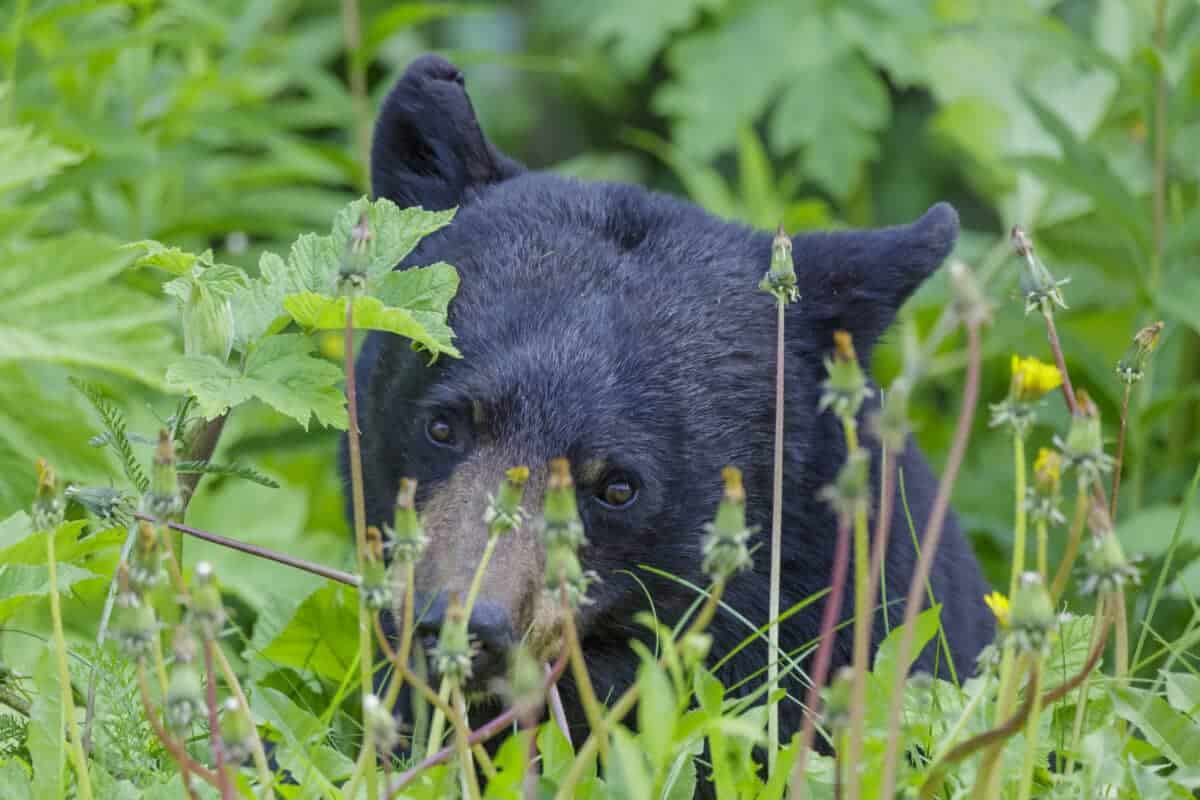
Wildlife in the USA: Black bears inhabit nearly all the mountain ranges within the Catskill Mountains. Within New York State, the Catskill Mountains boast the highest density population of black bears. Specifically, the north side of the Kaaterskill Mountain Range, ranging from approximately 1800 to 3,300 feet, stands out as having the highest concentration of black bears in the Catskill Mountains.
Moose
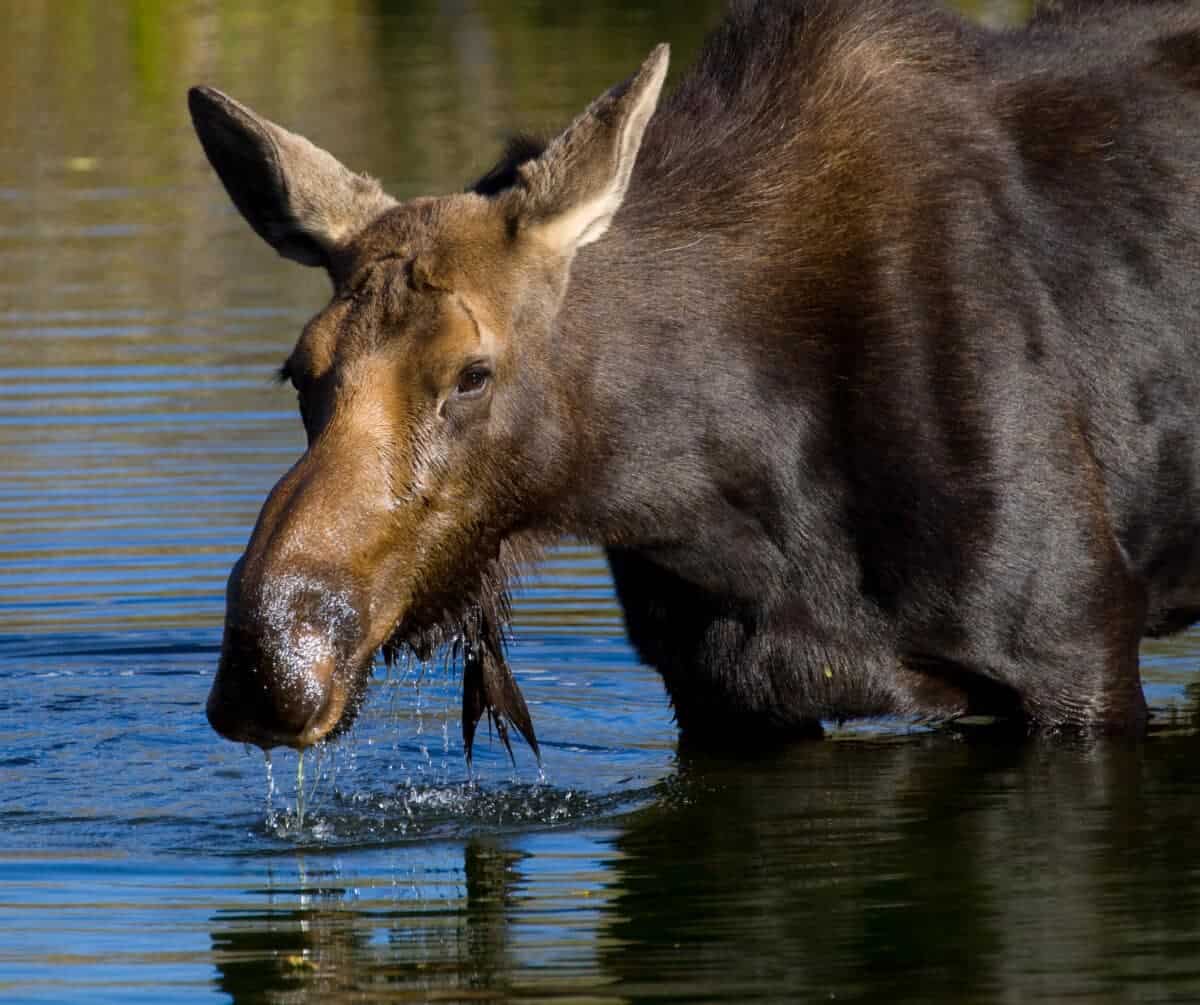
In New York, most moose are located in the northeastern part of the state in the Adirondack Mountains and the Taconic Highlands along the Massachusetts and Vermont borders. Moose are primarily browsers, feeding on the leaves, twigs, and buds of hardwood and softwood trees and shrubs.
Ideal moose habitat consists of a mosaic of upland mature mixed forest, open areas created by burns or logging, and wetlands.
Wyoming: Where to see wildlife in the US
Wyoming stands out as one of the most breathtaking states in America, characterized by its sparse human population and extensive untamed landscapes. Home to over 100 mammal species and 400 bird species, Wyoming boasts a diverse array of wildlife, including bison, mountain lions, wolverines, bobcats, grizzly bears, black bears, elk, moose, deer, pronghorn antelope, and wild horses.
For unparalleled wildlife encounters in the United States, Yellowstone is a standout destination. It is the sole location in the country where bison have continuously inhabited since prehistoric times. The Yellowstone bison population is exceptional, representing the largest such population on public land in the nation. Unlike many other herds, thousands of individuals in this population are allowed to roam relatively freely across the expansive landscapes of Yellowstone National Park.
Mountain Lions & Bobcats
While not frequently observed, mountain lions are prevalent throughout Wyoming. They typically favor rocky, brushy terrains featuring steep slopes, cliffs, and scattered tree openings. However, in recent years, there have been encounters in less optimal habitats, often in proximity to human settlements. For more information on wildlife sightings in the US, continue reading.
As one of three wild felids native to Wyoming, alongside bobcats and mountain lions, the Canada lynx possesses specialized adaptations for thriving in regions with heavy snowfall. This elusive feline is specifically equipped for hunting particular prey species, with the snowshoe hare being its primary target.
Wolverines
Wolverines (Gulo gulo) stand out as the foremost terrestrial members of the weasel family, characterized by their natural rarity and persistence at remarkably low population densities. In Wyoming, only a limited number of individual wolverines have been identified, with occurrences documented in places such as Grand Teton National Park and Yellowstone National Park. The current knowledge of the status and distribution of wolverines in Wyoming is largely incomplete, and expansive areas of potential wolverine habitat in the state’s high country remain unexplored.
Bears
Firstly, Wyoming has two bear species, the grizzly bear and the much more common, widespread, and smaller black bear.
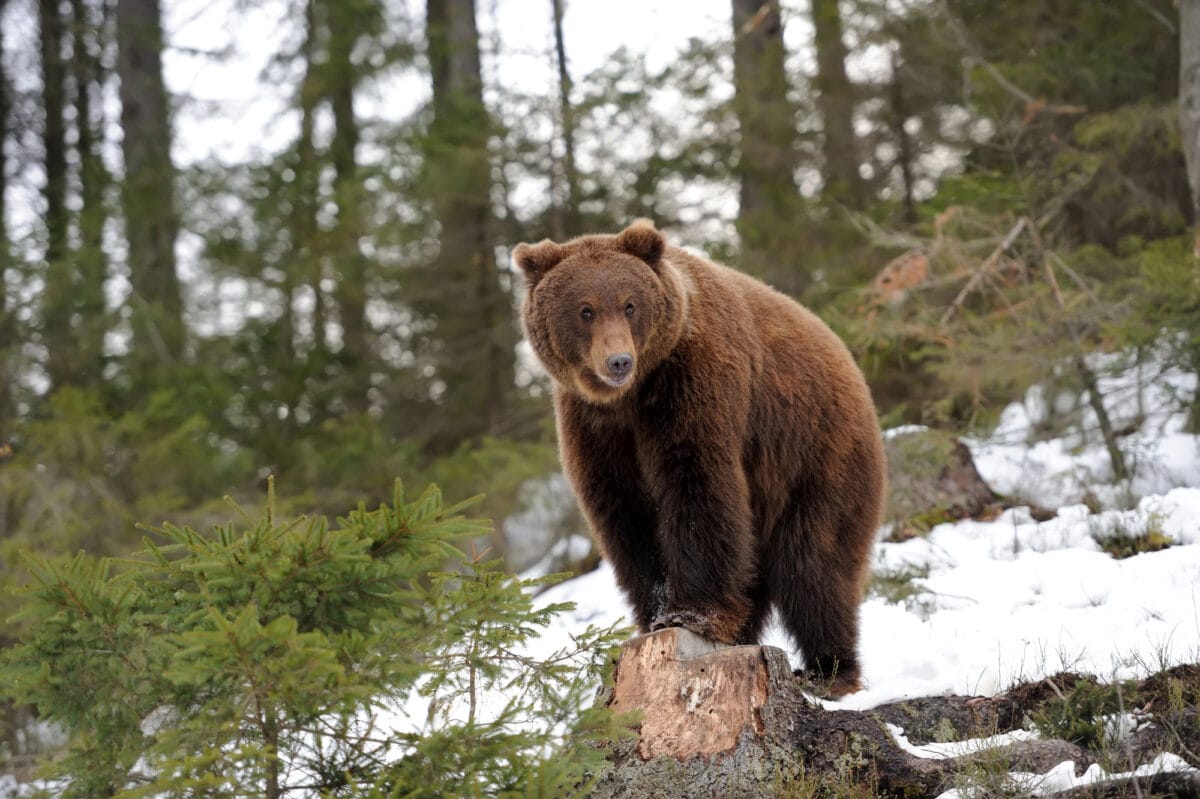
Secondly, there are currently approximately 700 grizzly bears in the Greater Yellowstone Ecosystem, including parts of northwest Wyoming, southwest Montana, and eastern Idaho.
Wild Horses
Surprisingly, about 6,500 wild horses roam the rangelands of Wyoming.
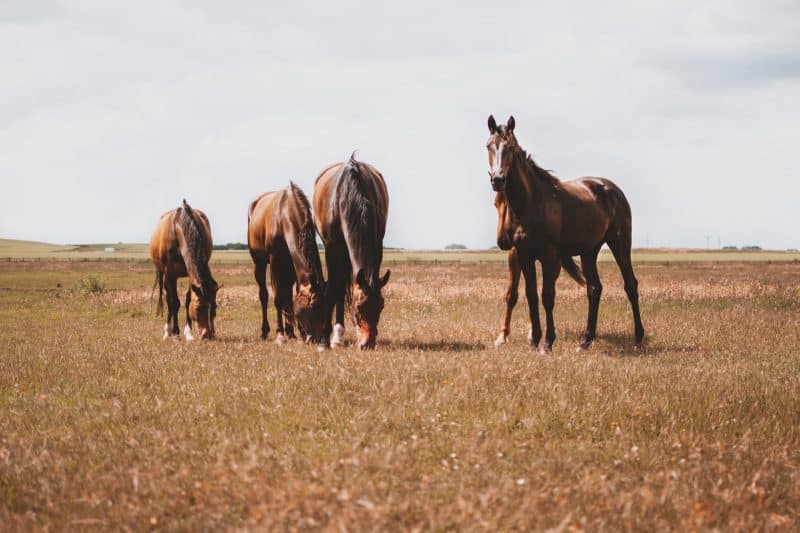
Furthermore, the three most accessible places to view wild horses are in the Pryor Mountains, outside Lovell, in southwest Wyoming near Rock Springs, and the Wild Horse Sanctuary on the Wind River Indian Reservation.
Operators
Wyoming is one of America’s most incredible wildlife-dense states; unique National Parks such as Yellowstone and Teton make the visit worthwhile! If visiting Wyoming is now on your bucket list, here are some operators who may help you on your journey to discovering the “Wild West.”
Yellowstone National Park Trips
Travel Wyoming: Grand Teton National Park
Colorado: Where to see wildlife in the US

Colorado is renowned for hosting one of the most vibrant and health-conscious populations, potentially attributed to the abundance of mountainous and outdoor activities, as well as a culture that prioritizes well-being. The state’s accessible and pristine natural surroundings provide compelling reasons to explore its fresh, invigorating landscapes and encounter the diverse wildlife that inhabits these serene settings.
Bighorn Sheep, Colorado Bison & Elk

Discovering Wildlife in the US: Colorado boasts the Bighorn sheep as its official state animal, known for their elusive nature as they inhabit the lofty peaks of the Rocky Mountains. Meanwhile, American Bison, impressive in size at up to 6.5 feet tall and weighing up to 2,200 pounds, traverse the land in herds and enjoy an average lifespan of 20 years. Despite the near loss of Elk from Colorado, concerted relocation efforts have successfully reintroduced these majestic creatures, with the state now proudly hosting a population exceeding 280,000 elk.
Mountain Lions
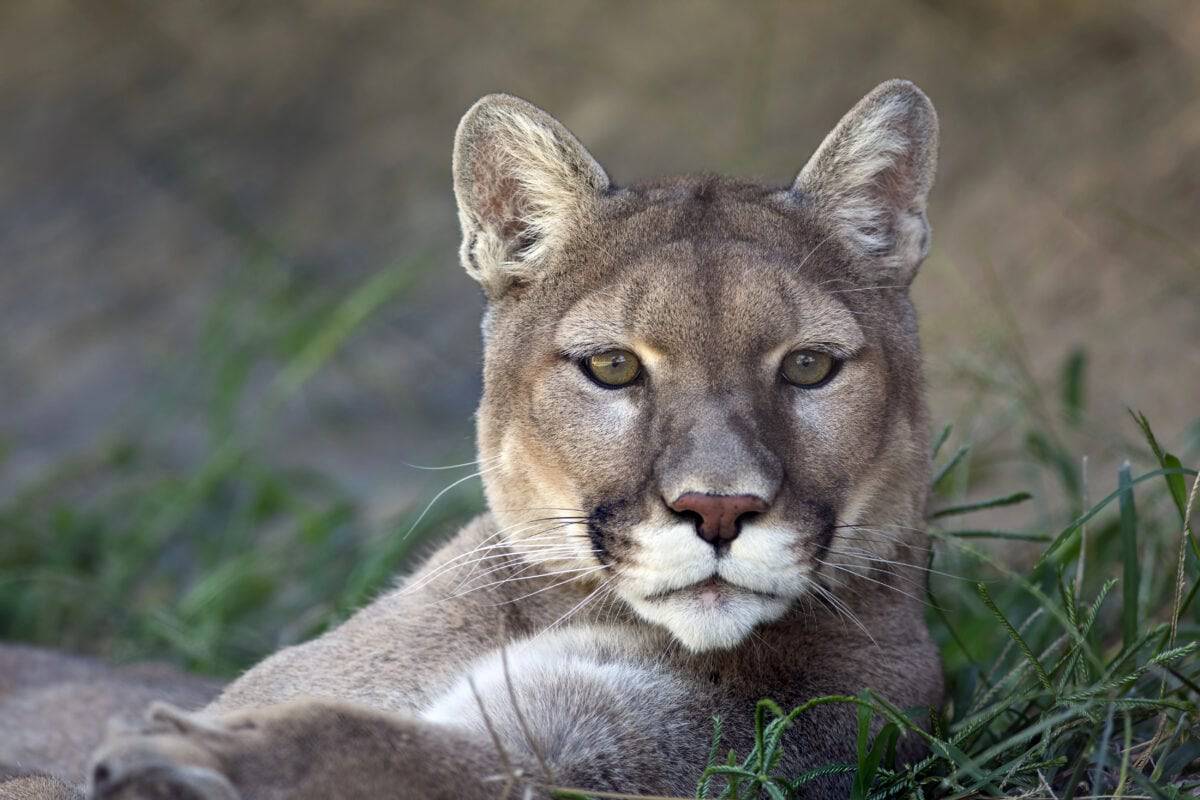
Mountain lions are distributed across Colorado, primarily favoring the foothills and rarely venturing into the eastern plains. They exhibit a clear preference for areas rich in pinyon pine, juniper, ponderosa pines, and low-lying oak brush.
Black Bears
Black bears can be found throughout Colorado in Gambel’s oak and aspen areas, mostly living in oak brush areas and occasionally venturing into aspen forests. The highest concentration consists from Walsenburg to Trinidad, west of the San Luis Valley.
Birds of Prey

With more than 400 species in Colorado, there’s no telling which wings you’ll see flapping. My Favorite Colorado birds to seek out are the mountain. While there are many birding opportunities throughout the state, the Colorado birding trails are a great place to start.
Prairie Dogs & Beavers
The black-tailed prairie dog occupies the eastern third of Colorado, with historical estimates suggesting coverage of seven million acres in the state. These prairie dogs are commonly found in grassland areas below 6,000 feet, particularly to the east of Colorado’s foothills.
The North American Beaver, a native species to Colorado, holds a crucial role in the state’s environment and ecology. They are relatively prevalent in Colorado, even in urban areas. Notably, in Castle Rock, beavers actively inhabit areas along East Plum Creek and Sellars Gulch.
Wild horses
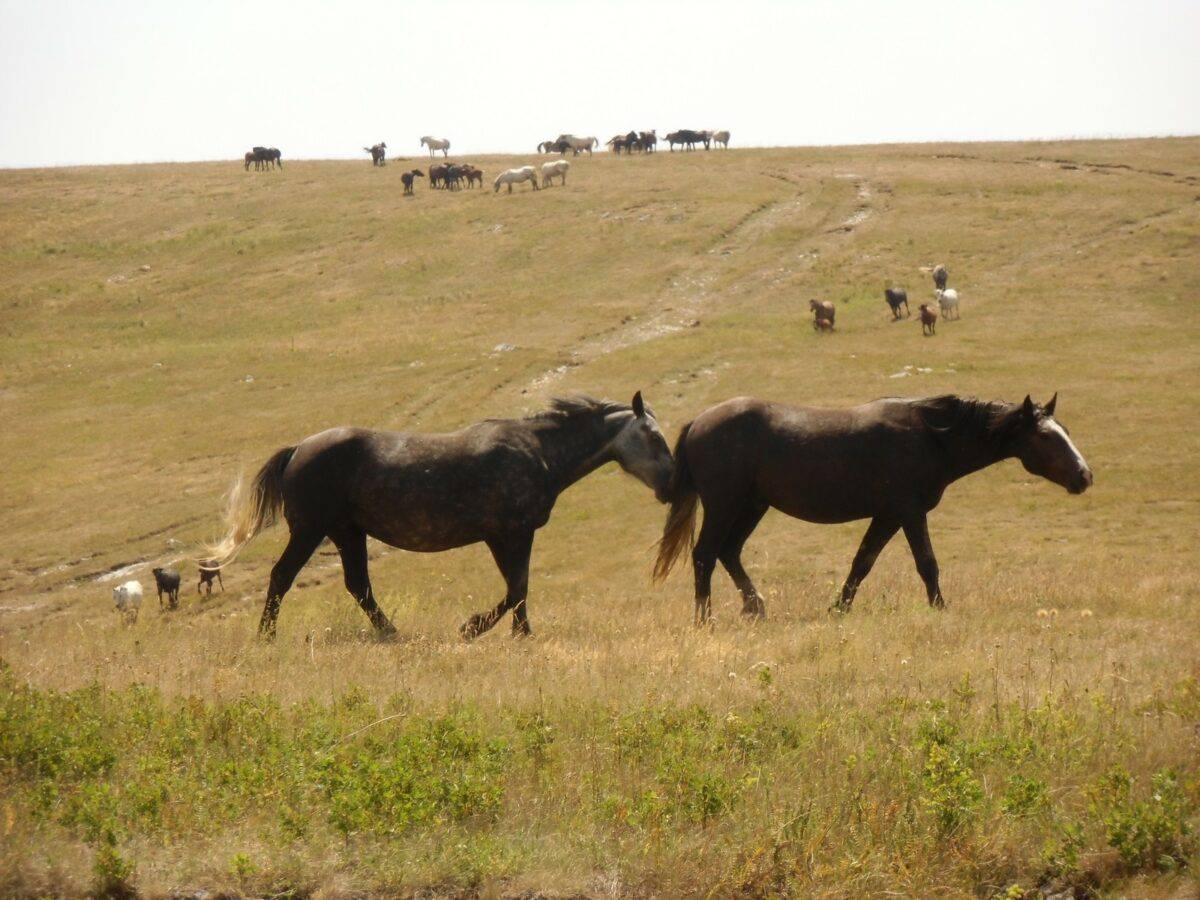
Little Book Cliffs Wild Horse Area expands over 36,000 acres of stunning canyons and plateaus. This is where visitors can hike and see the horses roaming.
Snakes
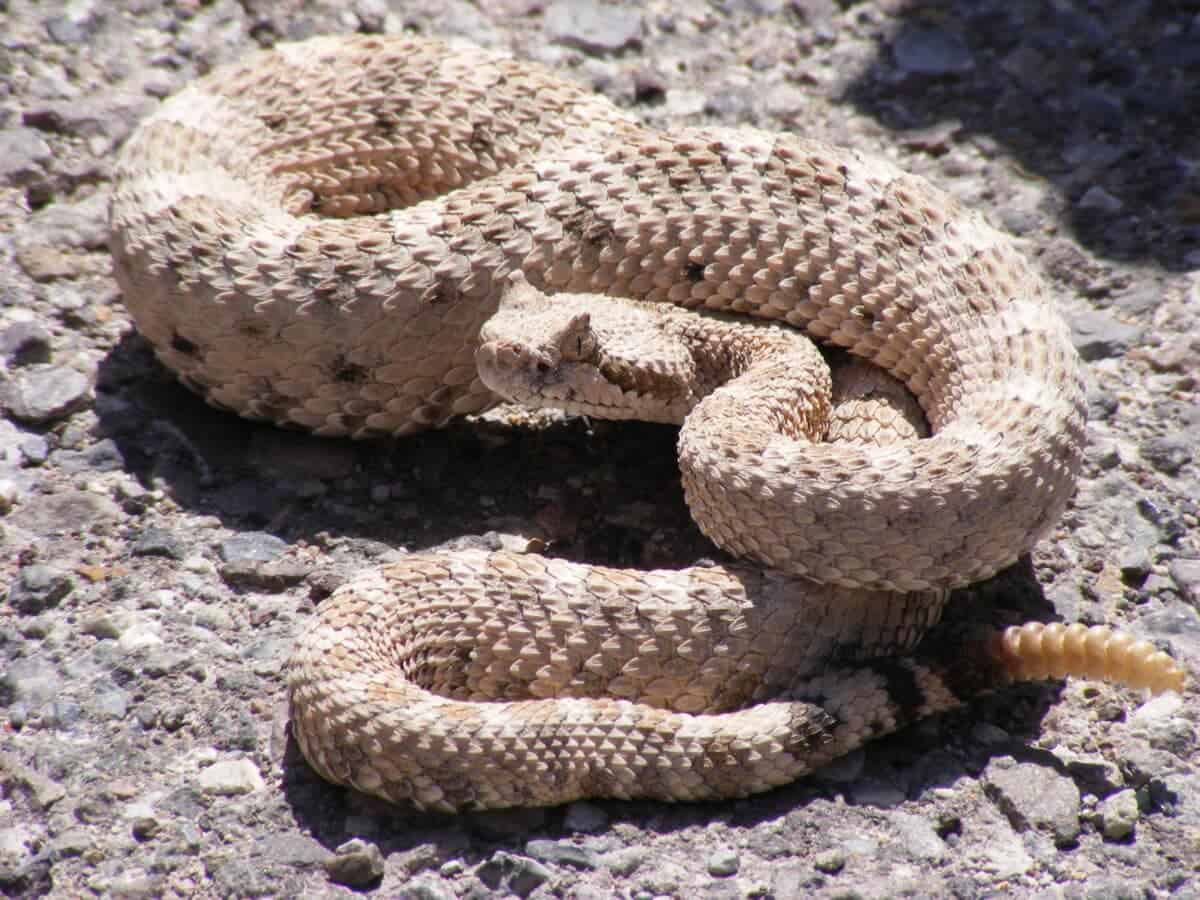
Colorado is residence to approximately 30 snake species, with only three presenting potential risks to humans: the prairie rattlesnake, the Western rattlesnake, and the massasauga rattlesnake. Specifically, the state hosts two types of rattlesnakes, namely the western/prairie rattlesnake and the massasauga.
Secondly, Colorado’s four National Parks — Rocky Mountain, Mesa Verde, Great Sand Dunes, and Black Canyon of the Gunnison are home to some of the world’s most wondrous and diverse scenery.
What wildlife in Colorado are you eager to encounter? Clearly, the state offers a varied landscape encompassing arid deserts, river canyons, and snow-clad Rocky Mountains, making it a haven for nature enthusiasts seeking diverse wildlife experiences. We highly recommend exploring the vibrant wildlife of Colorado!
California: Where to see wildlife in the US
Wildlife in California: Given the vast expanse of California and its coastal location, the state showcases a rich diversity of animals. Varied climates, ranging from temperate mountains in the north to the desert landscapes in California, along with coastal mountains and arid chaparral, contribute to the abundance of animal life. Beyond the creatures inhabiting California’s terrestrial ecosystems, another world teems beneath the waves of the Pacific Ocean, adding a significant dimension to the tapestry of American wildlife.
California offers numerous compelling reasons to visit. Whether you seek fun, adventure, beauty, or history, the Golden State has something for everyone on the West Coast. After exploring the vibrant wildlife and attractions, you’ll likely find yourself planning a trip to California in no time!
California has more native species than any other state in the U.S. and has the greatest number of endemic species that don’t occur anywhere else. Animals in America you can’t miss.
Mountain Lions
Firstly, Mountain lions are not threatened or endangered in California. California’s lion population is relatively high, and their numbers appear stable. Secondly, mountain lions are legally classified as “specially protected species.” These include the puma/ cougar and bobcats.
The red foxes, Wolves, and Coyotes
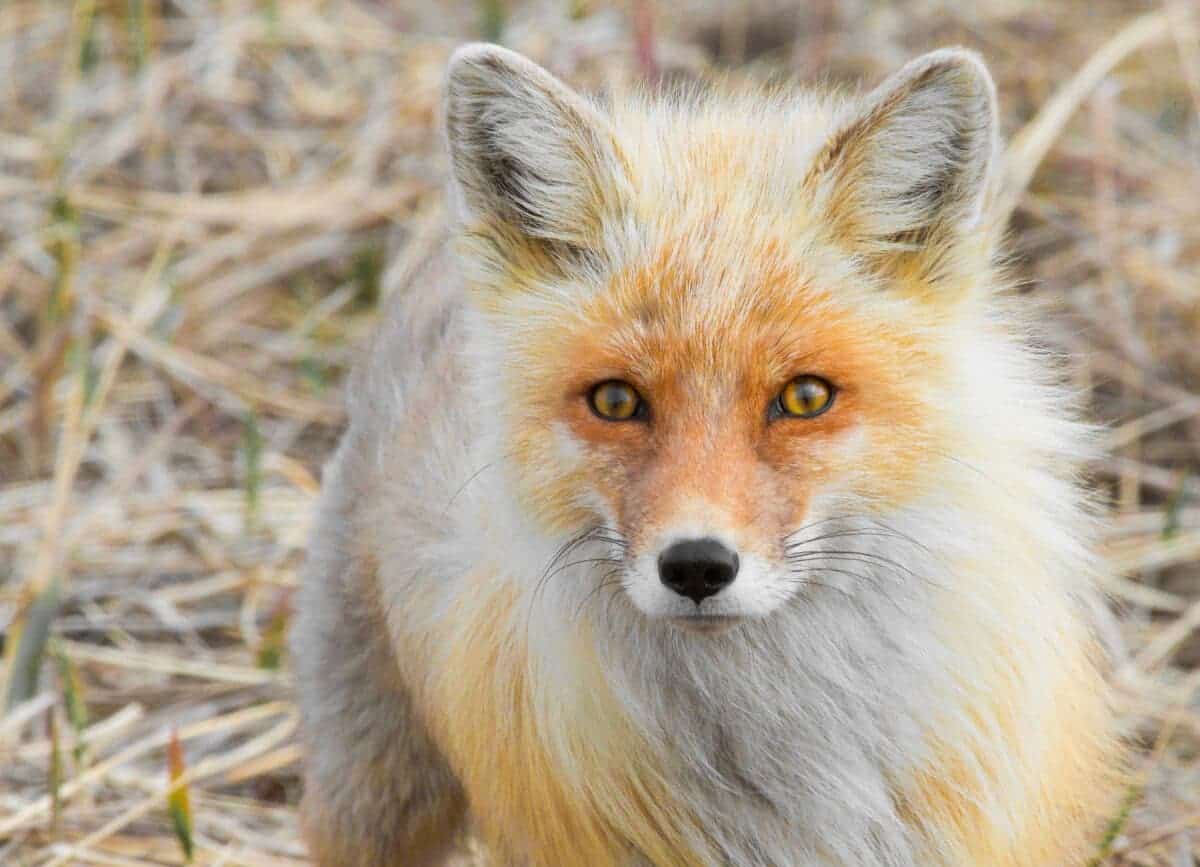
Wolves are making a comeback in California, with individuals dispersing from source populations in other states. For optimal wolf sightings, consider visiting during the summer or midwinter and embark on your search during the early morning. Prime locations include the Lamar Valley, Hayden Valley, and Blacktail Deer Plateau in Yellowstone. In Grand Teton, explore Willow Flats for potential sightings.
Coyotes, on the other hand, are distributed throughout California, occupying diverse habitats from deserts and mountains to urban areas. Issues arise when people start feeding coyotes, whether intentionally or unintentionally.
Black Bears

Two of California’s national parks offer opportunities for bear encounters. Yosemite National Park and Sequoia and Kings Canyon National Parks are home to hundreds of black bears, exemplifying the diverse wildlife found in America.
Additional Animals:
Animals in America wouldn’t be complete without mentioning raccoons, skunks, weasels, squirrels, kangaroo rats, opossums, and ornate shrews – among the many smaller mammals that call California home. In addition to these, California is also home to larger mammals such as elk, deer, bighorn sheep, and zebras.
Marine Life

Marine world Africa in the USA redwood city. Image via Ed Bierman, CC BY 2.0 https://creativecommons.org/licenses/by/2.0, via Wikimedia Commons
California boasts a diverse array of marine mammals, including harbor seals, elephant seals, sea lions, sea otters, killer whales, and blue, fin, humpback, and gray whales.
The state is especially renowned for family-friendly whale-watching activities. Gray whales, orcas, humpbacks, minke whales, finback whales, and blue whales migrate off the California coast throughout the year, ensuring the likelihood of spotting at least one species on a whale-watching excursion.
Furthermore, California is a haven for birding enthusiasts and reptile aficionados:
- Birds: With over 600 bird species identified in California, they constitute about two-thirds of all bird species in North America.
- Reptiles: The state is home to 23 species of reptiles, including pond turtles, lizards, and snakes, with the Garter snake being the most commonly encountered.
California boasts nine national parks—more than any other state—and each has unique appeal. Death Valley is the biggest, the hottest, and the most foreboding. Joshua Tree possesses an otherworldly charm and so much dynamic flora.
9 National Parks: Exploring California’s forests, volcanoes, deserts + islands
Tour Operators
Safari West has acted as a haven for animals in Sanoma County, California, for years. throughout wildfires, they have remained operational, with animal conservation at the forefront. For an authentic safari experience, look at the Sanoma Serengeti Safari west experience!
Yexplore tours offer exclusive and customizable exploration throughout the magnificent Yosemite National park. Make sure to visit their website for the opportunities that await potential travelers and wildlife enthusiasts.
California has a world of diversity within its state borders. Animal encounters, from the coastline to the desert, are guaranteed to be plentiful and authentic.
Florida: Where to see wildlife in the US

Glacier two medicine lake in the USA. Image via NPS Photo, Public domain, via Wikimedia Commons
First and foremost, the Sunshine State is celebrated for its stunning beaches and abundant sunshine, serving as the habitat for a myriad of diverse animal species.
Remarkably, Florida stands out as one of the most biodiverse states in the USA. Moreover, it is a prime location for observing an array of wildlife, including dolphins, crocodiles, manatees, snakes, turtles, alligators, panthers, black bears, and a multitude of bird species such as pelicans and flamingos.
Black Bears
Notably, a highlight in the search for Animals in America is the presence of Florida black bears, with significant populations primarily residing on or near public lands. Key locations encompassing these populations include the Ocala National Forest, Big Cypress National Preserve, Apalachicola National Forest, Osceola National Forest, and Okefenokee National Wildlife Refuge.
Snakes
Snakes, constituting 44 native species, play a fascinating and essential role in Florida’s intricate ecology, as noted by the Florida Fish and Wildlife Conservation Commission. They inhabit a variety of ecosystems, including coastal mangroves, freshwater wetlands, dry uplands, and residential areas. These creatures can be encountered in swamps, forests, lakes, and housing developments. Notably, the highest occurrence of snakes is observed in the Everglades, located in the southern part of Florida—a detail fitting for an article on Animals in America.
Turtles
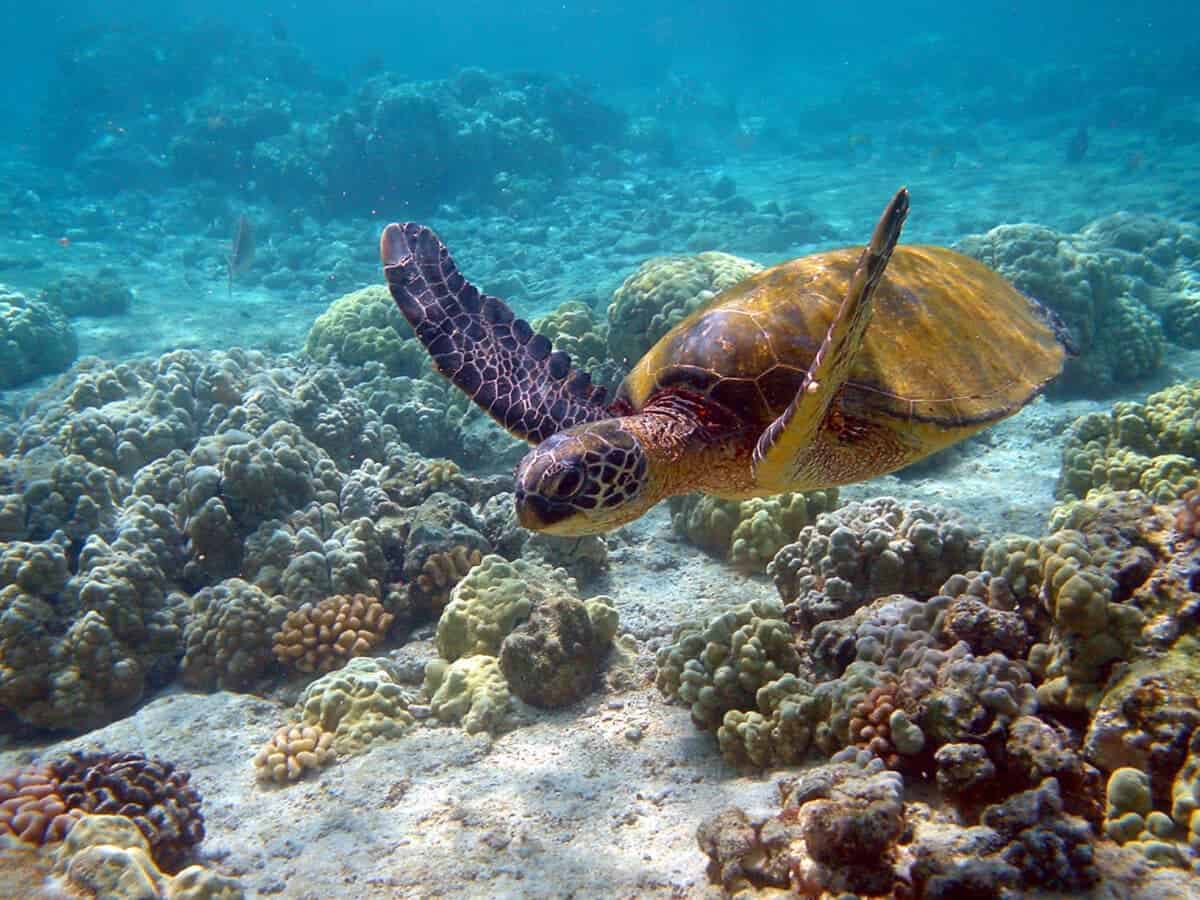
Accordingly, five sea turtles are found swimming in Florida’s waters and nesting on Hutchinson Island beaches, including Green Sea Turtles, Loggerhead Sea Turtles, Ridley’s Kemp Sea Turtles, Hawksbill Sea Turtles, and Leatherback Sea Turtles.
Leatherbacks nest earliest, from March through July, while greens and loggerheads nest from April through September. A nighttime turtle walk in Cocoa Beach is one of the best ways to see a sea turtle during the nesting season.
Alligators & Crocodiles
Firstly, alligators inhabit the lakes and canals. East of Titusville on the Space Coast, Merritt Island State Wildlife Refuge is a haven for various Florida wildlife. Additionally, a visitor center is available to guide you to the optimal spots for observing these prehistoric beasts.
Alligators are a common sight across the continental United States, with Florida being particularly well-known due to the Everglades and numerous swamps. However, these creatures are not limited to swampy areas and are widely distributed.
Lastly, the Florida Everglades is renowned for several reasons, including being the exclusive environment on earth where American alligators and crocodiles coexist harmoniously.
Manatees & Dolphins
The best time to swim with manatees in Florida is mid-November to late March. Only then hundreds of manatees are present at the springs. The total population in Crystal River alone reaches up to 800 manatees during the winter months—a significant part of Animals in America.
Usually, in Florida, both names refer to the Bottlenose dolphin (Tursiops truncates), the species commonly found along Florida’s Atlantic and Gulf coasts. (True porpoises are a different saltwater mammal. They aren’t commonly found in Florida waters.) Dolphins are gray with a lighter underside.
Because dolphins are relatively common around the Sunshine State, the range of locations, tours, and attractions is wide. Whether in St. Augustine, Miami Beach, or the Florida Keys, you can encounter them almost everywhere along the coasts. Animals in America: If you want to play it safe and get up close and personal with these playful creatures, you can book many boat or kayak tours at the following locations for very little money:
– Biscayne Bay
– Key West
– Fort Meyers Beach
Bird Life
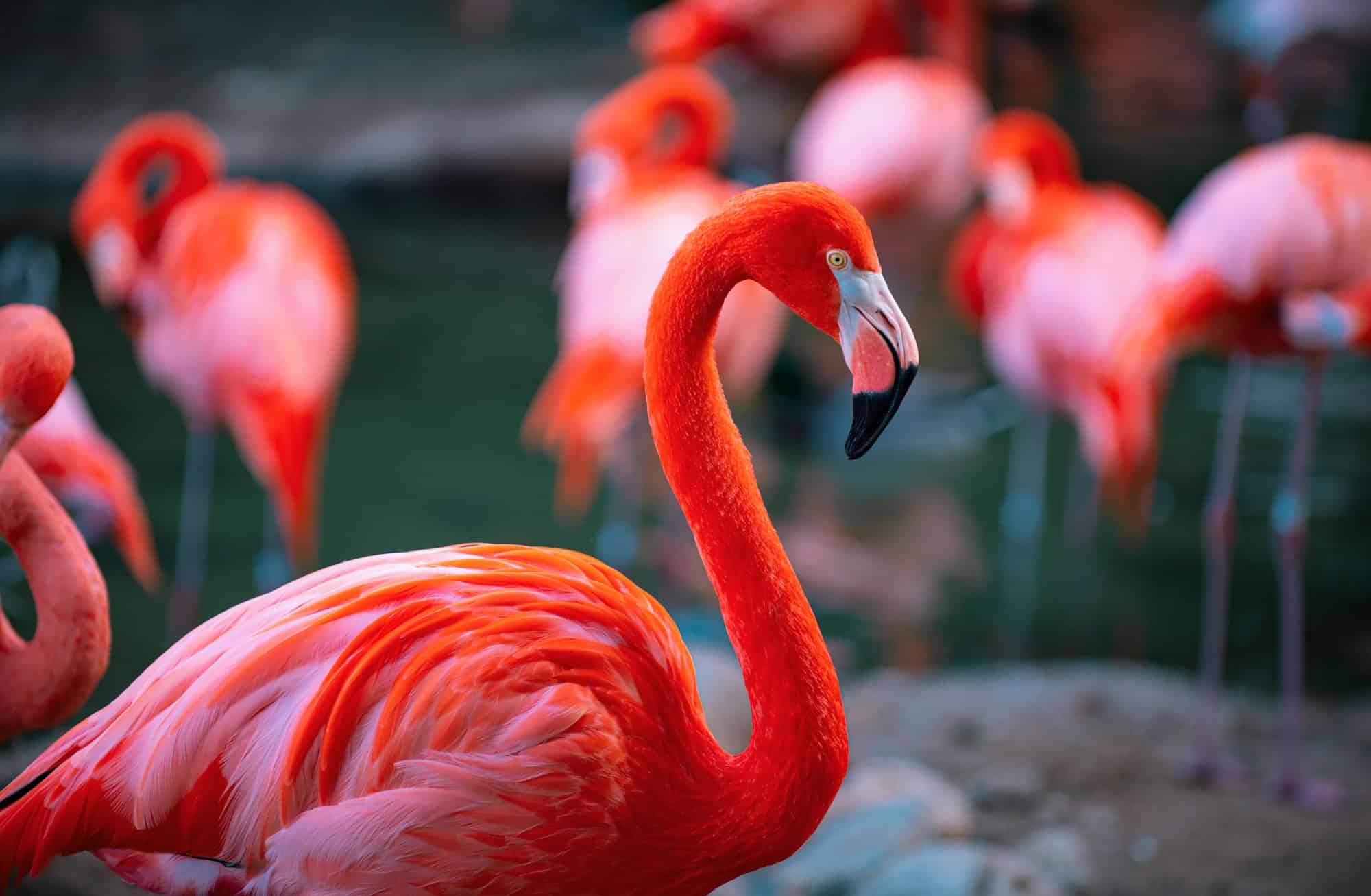
Firstly, bird enthusiasts are championing the return of the famous creature, and Everglades National Park is the destination for catching a glimpse of flamingos stateside. There are 196 species of breeding birds in Florida. Read the Breeding Bird Atlas to see where they live and learn fascinating facts about these species.
Locations
Wildlife habitats in Florida cover large areas. Here we once again compile the best places to encounter wildlife. In addition to Florida’s 171 state parks, the following national parks are particularly worth visiting.
Hawaii: Where to see wildlife in the US
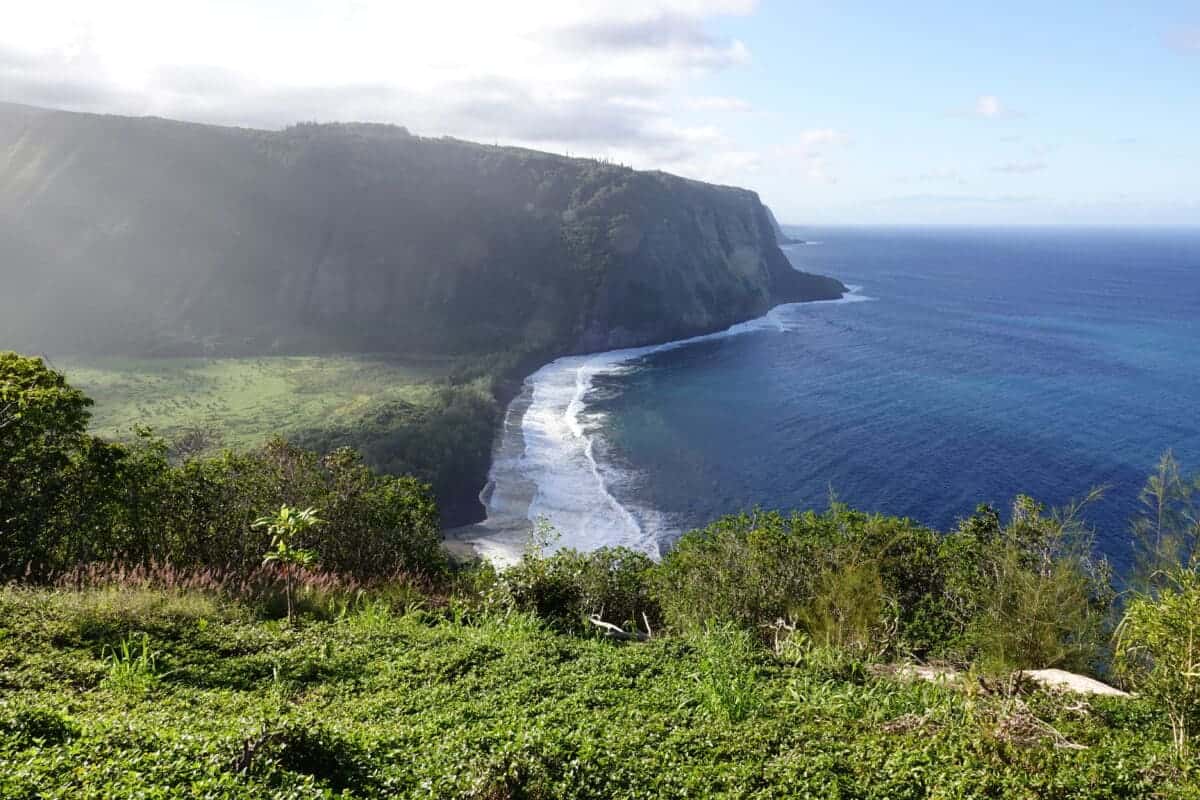
Hawaii stands as a globally acclaimed beach destination, celebrated for its stunning beaches featuring warm waters and picturesque mountain ranges. Lastly, the wildlife of Hawaii is as enigmatic as it is captivating, and this blog aims to provide insight into the hidden treasures that adorn the islands.
Dolphins of Hawaii
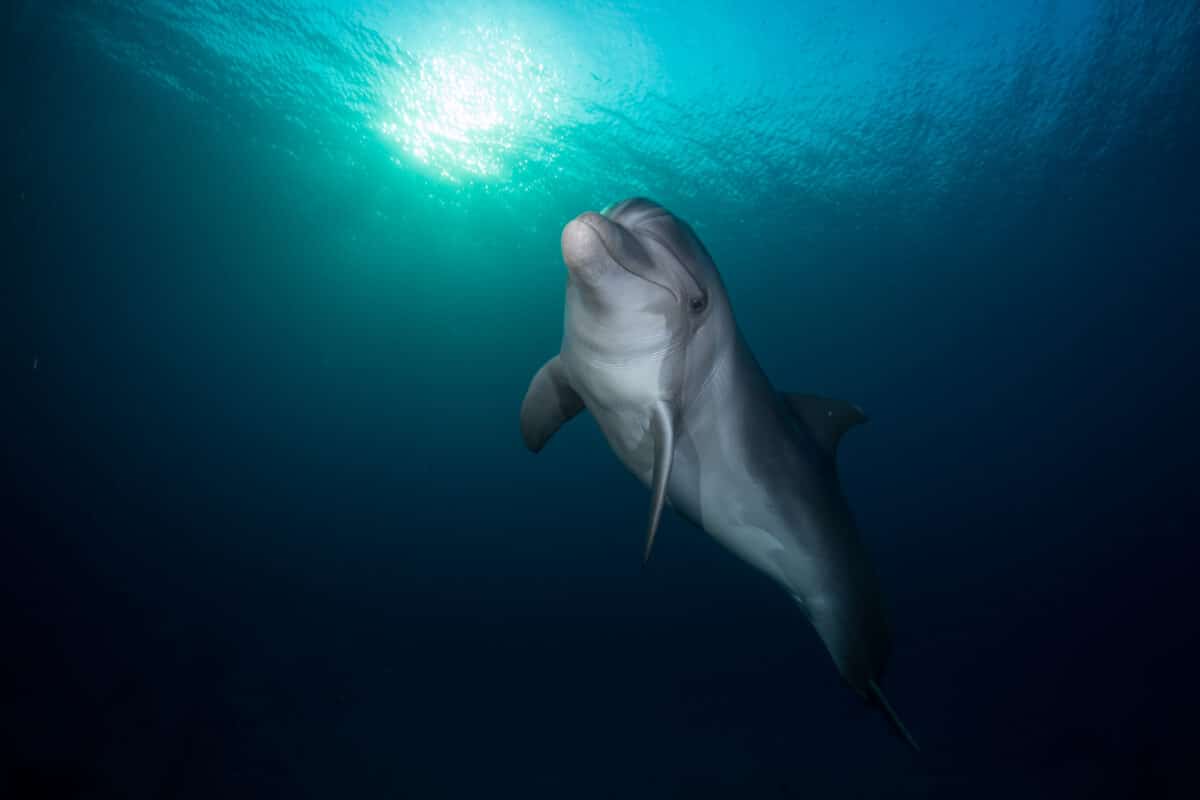
Firstly, within the warm waters of Hawaii, 18 species of toothed dolphins grace the ocean, with the most common being the Hawaiian spinner, spotted (kiko), bottlenose, and rough-toothed dolphins. Additionally, often-seen members of the dolphin family, although termed whales (kohola), include pilot and false killer whales.
Secondly, these dolphins are typically observed in smaller pods or groups, with less than ten individuals. Furthermore, known for their intelligence and elevated position on the oceanic food chain, dolphins partake in playful activities, such as bow riding, where they surf in front of a boat or even a whale’s bow wave.
Hawaiian Hoary Bat
As the sole surviving land mammal indigenous to the Hawaiian archipelago, the Hawaiian hoary bat is currently endangered, facing apparent population declines and a scarcity of information regarding its distribution, abundance, and habitat requirements.
Through advanced DNA sequencing conducted by a team of scientists, an exciting revelation has emerged. Hawaii’s designated state land mammal, the Hawaiian hoary bat, undertook migrations to the islands. Specifically, these migrations occurred from the Pacific coast of North America in two distinct waves, spanning more than 9,000 years apart.
Hawaiian Monk Seal
Endemic to Hawaii, Hawaiian monk seals stand as the exclusive marine mammal in U.S. waters. Predominantly inhabiting the northwestern Hawaiian Islands, approximately 200 of these remarkable creatures are found on the main islands. Named for its distinctive skin folds reminiscent of a monk’s cowl, the Hawaiian monk seal is often observed in solitude or in small groups, making it a noteworthy subject in the realm of Animals in America.
Indian Mongoose
If found in Hawai’i they are native to India. Subsequently, the sugar industry initially introduced them to Hawai’i Island in 1883. This was to control rats in sugarcane fields on Maui, Moloka’i, and O’ahu.
The Indian gray mongoose is particuarlly known for its fondness of fighting and eating poisonous snakes, such as cobras. “Rikki-tikki-tavi” is a short story by Rudyard Kipling about a young mongoose that fights a cobra. Mongooses can live for up to 20 years in captivity, according to National Geographic.
Deer of Hawaii
In 1867, Axis deer were brought to the island of Molokai, Hawaii, as a gift to King Kamehameha. Subsequently, they were introduced to Lanai, another Hawaiian Island, and have since thrived on both islands. The absence of natural predators on Molokai has led to a significant population explosion, with an estimated 50,000 to 70,000 deer now occupying the 260 square-mile island. Residents face challenges in controlling the population solely through hunting efforts.
Feral Wallaby
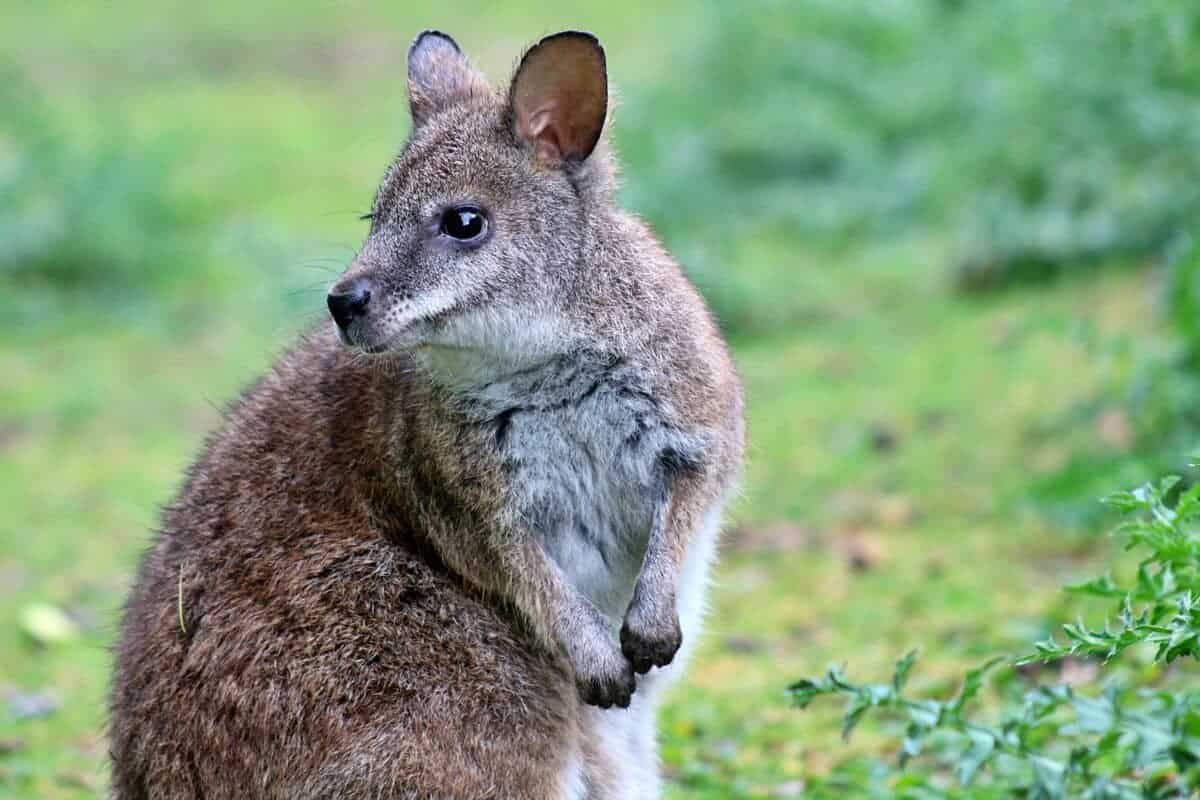
While not native to Hawai’i, wallabies are not classified as invasive and are protected by state law. Their presence is limited to O’ahu, a consequence of a pair escaping from a private zoo in Kalihi over a century ago, in 1916.
Turtles
Sea Turtles in Hawaii: Hawaii’s waters are home to five of the world’s seven sea turtle species, including the green sea turtle (honu), hawksbill (honu’ea), leatherback, loggerhead, and olive ridley.
The optimal time to spot green sea turtles at Laniakea Beach is during the summer when the waters are calmer. Conversely, in winter, the north shore experiences more substantial waves. Sea turtles, particularly the green sea turtle, prefer tranquil waters and may come ashore to bask in the sun during ideal conditions—an extraordinary highlight from Animals in America.
Moreover, there is much more to explore beyond the stunning mountains and beaches.
Summary of Animals in America
Did you enjoy this article on Animals in America? Featuring the top wildlife encounters around the country. From Alaska to Hawaii, let us know which of these states’ wildlife is on your bucket list to experience firsthand!
Additionally, if you are looking for more on the wildlife in the United States, look at our feature blogs of the here covered states: Alaska, Wyoming, California, Hawaii, Colorado, New York, and Florida; on our blog page that is all things animal lover.
Lastly, thanks for reading Animals in America.
Frequently Asked Questions (FAQs)
The United States is home to a wide variety of common animals, including white-tailed deer, raccoons, squirrels, rabbits, skunks, foxes, and various bird species like robins, cardinals, and sparrows.
The most common animal in the USA is the white-tailed deer (Odocoileus virginianus). These graceful creatures are found in abundance across the country, from forests to suburban neighborhoods.
Yes, North America, which includes the United States, is rich in wildlife. It is home to numerous wild animals, including mammals, birds, reptiles, and amphibians, thriving in various habitats across the continent.
Five iconic animals in North America include the American bison, also known as the buffalo (Bison bison), the bald eagle (Haliaeetus leucocephalus), the North American black bear (Ursus americanus), the gray wolf (Canis lupus), and the American alligator (Alligator mississippiensis).
The USA is known for several iconic animals, but one that stands out is the bald eagle. The bald eagle is the national bird and symbol of the United States, representing strength, freedom, and independence.
Join our Forum for free today!

- These are The 5 Largest Great White Sharks Ever Recorded - July 19, 2024
- The Surprising Benefits of Big Game Hunting - July 18, 2024
- $100k+ Hunting Experiences The Most Expensive Animals to Pursue - July 17, 2024

